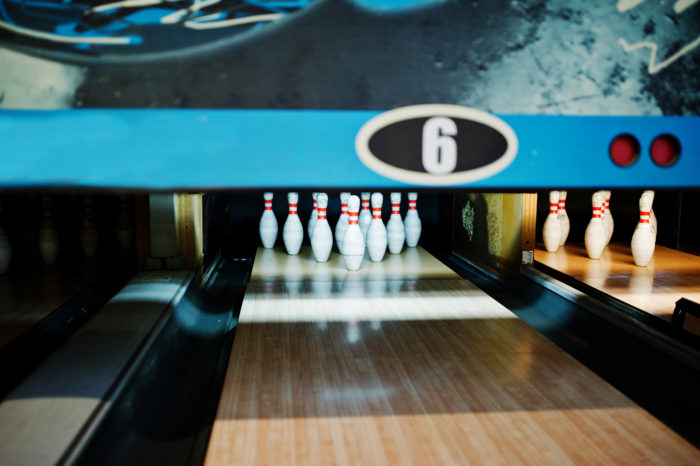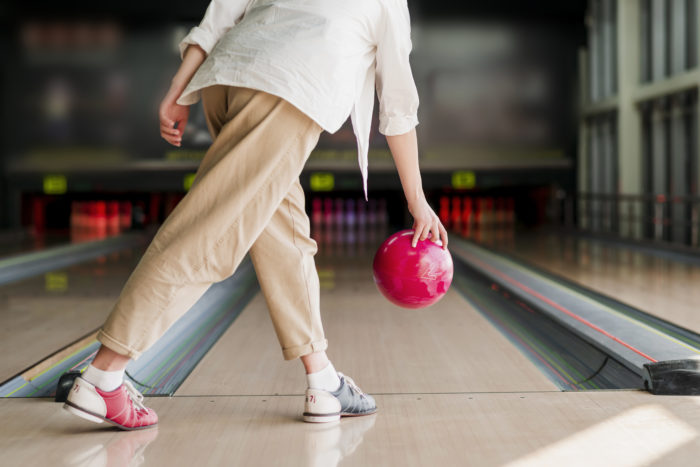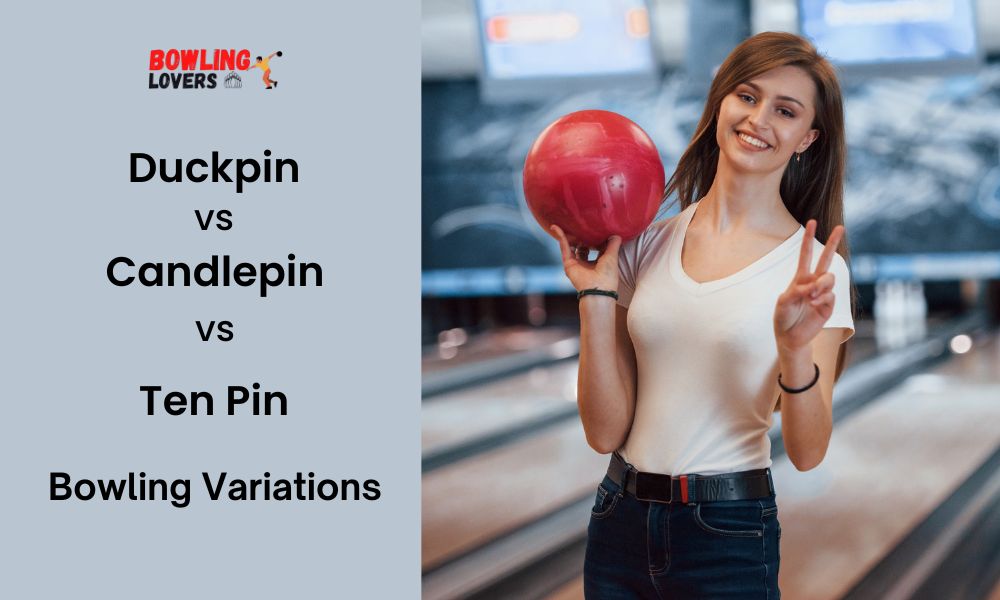Bowling takes many forms, with Duckpin, Candlepin, and Ten Pin Bowling being distinct variations.
In this article, we’ll explore the origins, rules, and differences between these bowling styles.
From unique equipment to scoring systems, understanding the nuances of each can enhance your bowling experience.
So, let’s delve into the world of Duckpin, Candlepin, and Ten Pin Bowling and unravel the mysteries of these intriguing variations!
What is Duckpin Bowling?
Duckpin bowling is a unique variation where players use smaller balls and pins compared to traditional ten-pin bowling.
The balls are slightly larger than a softball and lack finger holes, while the pins are shorter at 9.4 inches (23.3 cm) tall. Duckpin balls are smaller in diameter and weigh between 3 lb 6 oz to 3 lb 12 oz.
Another interesting difference is that players get three throws instead of two. Duckpin bowling offers a distinct twist to the traditional bowling experience with its unique rules and equipment.
What is Candlepin Bowling?
Candlepin bowling is a unique variation of bowling primarily played in the Canadian Maritime provinces and New England.
With tall, narrow pins resembling candles, players use handheld-sized balls without finger holes.
Pins are not cleared after each roll, adding to the challenge. Lower scores are common due to smaller pins and balls making it harder to knock them down.
What is Ten Pin Bowling?
Ten-pin bowling is a widely popular sport played on wood or synthetic lanes with ten pins arranged in an equilateral triangle.
The objective is to knock down all pins in one or two rolls. Balls used in ten-pin bowling have finger holes and weigh between 6 and 16 pounds.
It is played in bowling alleys, with leagues and tournaments for players of all ages and skill levels.
Ten-pin bowling is a fun and enjoyable sport that has gained global recognition and continues to be a beloved pastime for many.

Difference between Duckpin and Candlepin Bowling?
Pins
Duckpin bowling uses shorter and wider pins, while candlepin bowling uses taller and thinner pins.
Balls
Duckpin bowling uses balls that are slightly larger than a softball without finger holes, while candlepin bowling uses handheld-sized balls that fit in the palm of the hand.
Rolls per turn
Duckpin bowling players get three rolls per turn, while candlepin bowlers have only two rolls.
Scoring
In duckpin bowling, players can score up to 30 points per frame, while in candlepin bowling, players can score up to 20 points per frame.
Geographical location
Duckpin bowling is more popular in the mid-Atlantic and southern regions of the United States, while candlepin bowling is more popular in the New England region and the Canadian Maritime provinces.
What’s the difference between Duckpin and Ten Pin Bowling?
Pins
The pins in duckpin bowling are smaller and squatter than those in ten-pin bowling, which are taller and thinner.
Balls
The balls used in duckpin bowling are smaller and lighter than those used in ten-pin bowling.
Scoring
In duckpin bowling, players get three rolls per turn and can score up to 30 points per frame, while in ten-pin bowling, there are two rolls per turn and a maximum score of 300 points for a perfect game.
Difficulty
Duckpin bowling is generally considered more difficult than ten-pin bowling due to the smaller size of the ball and pins.
Geographical location
Duckpin bowling is more popular in the mid-Atlantic and southern regions of the United States, while ten-pin bowling is more popular throughout the country and around the world.

Frequently Asked Questions
How many pins are used in Duckpin, Candlepin, and Ten Pin Bowling?
A total of ten pins are used in both Ten Pin and Candlepin Bowling. In Duckpin Bowling, 10 smaller pins are used, which are shorter and squatter than the pins used in Ten Pin Bowling.
Which type of bowling is generally easier or harder: Duckpin, Candlepin, or Ten Pin?
The perception of which type of bowling is easier or harder depends on several factors, including the skill level of the player and personal preference.
However, in general, Duckpin and Candlepin Bowling are considered more challenging than Ten Pin Bowling due to their smaller balls and pins, which require more accuracy and precision to hit consistently.
Additionally, the unique rules of each game can also make them more difficult to score. That said, all three types of bowling have their own unique challenges and require different skills, making them enjoyable for bowlers of all levels.
Can you use the same ball for both Candlepin and Duckpin Bowling?
While the balls used in Candlepin and Duckpin Bowling are similar in size, they are not exactly the same.
Candlepin balls are slightly smaller than Duckpin balls, and they do not have finger holes, unlike Ten Pin Bowling balls.
Therefore, it is not recommended to use the same ball for both Candlepin and Duckpin Bowling as the size differences can affect the ball’s performance, and without finger holes, the grip may not be secure.
What is the highest possible score in Candlepin Bowling?
The highest possible score in Candlepin Bowling is 300, which is similar to Ten Pin Bowling.
However, due to the unique rules and scoring system of Candlepin Bowling, achieving a perfect score of 300 is highly unlikely and has never been done before.
This is because, in Candlepin Bowling, players have only two rolls per frame, and the maximum score per frame is 20 points, which can be achieved by knocking down all ten pins with the first roll.
Are the lanes different sizes for each type of bowling?
No, the dimensions for bowling lanes are the same across all types of bowling, whether it’s traditional tenpin bowling, candlepin bowling, or any other variation.
The regulation size for a bowling lane is 42 inches wide and 60 feet long from the foul line to the center of the headpin.
However, there may be some variations in the length of lanes for residential purposes, which can range from 55 to 86 feet.
Conclusion
Bowling offers a diverse range of variations, each with its own unique rules and equipment.
From Duckpin with its smaller balls and pins to Candlepin with its handheld-sized balls and challenging pin setup, to the widely popular Ten Pin Bowling with its finger-hole balls and competitive leagues, there is something for everyone in the world of bowling.
Whether you’re a seasoned bowler or a beginner, exploring these different styles can add excitement and variety to your bowling experience.
So, next time you hit the lanes, consider trying out Duckpin, Candlepin, or Ten Pin Bowling for a fresh take on this classic sport!

